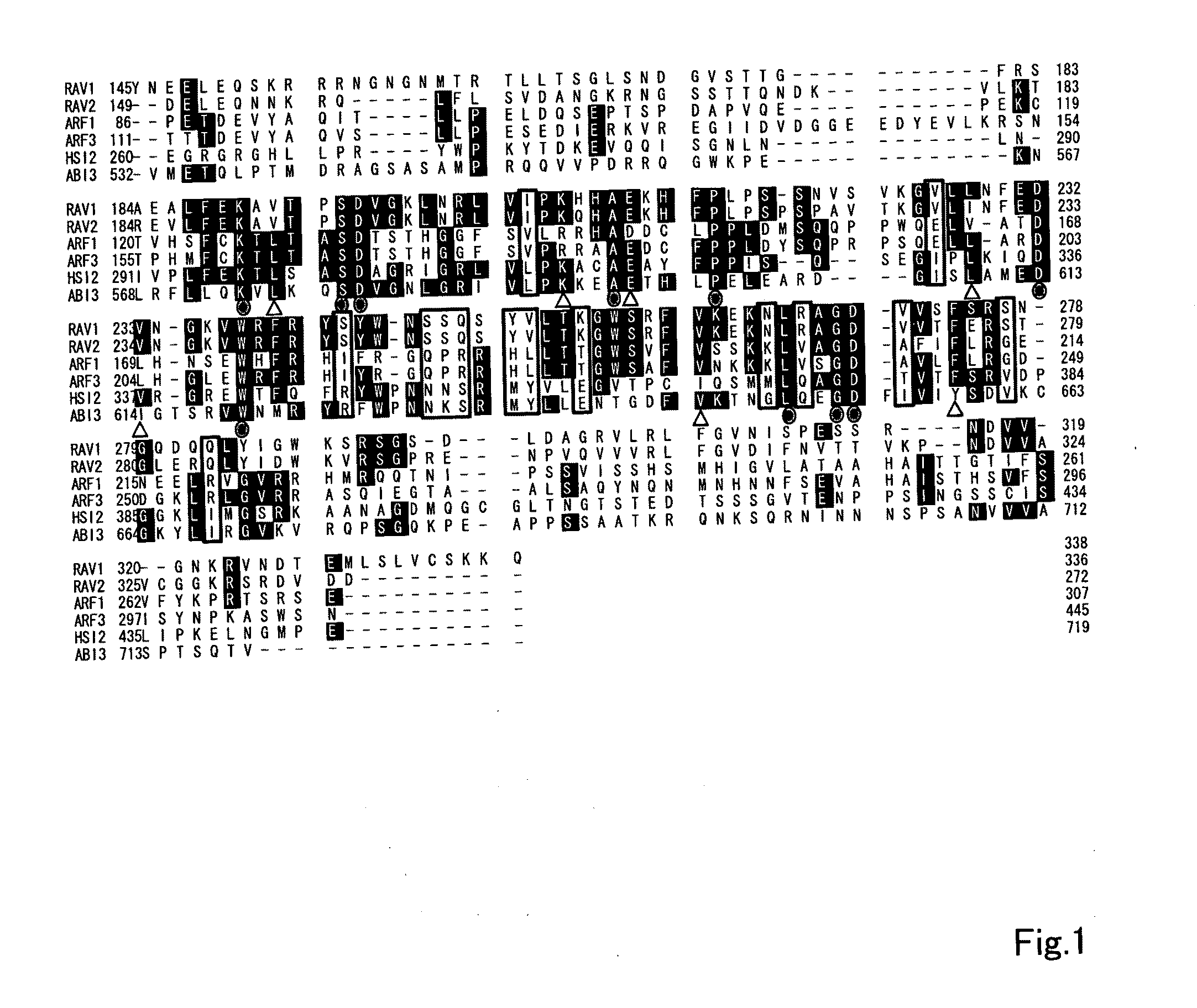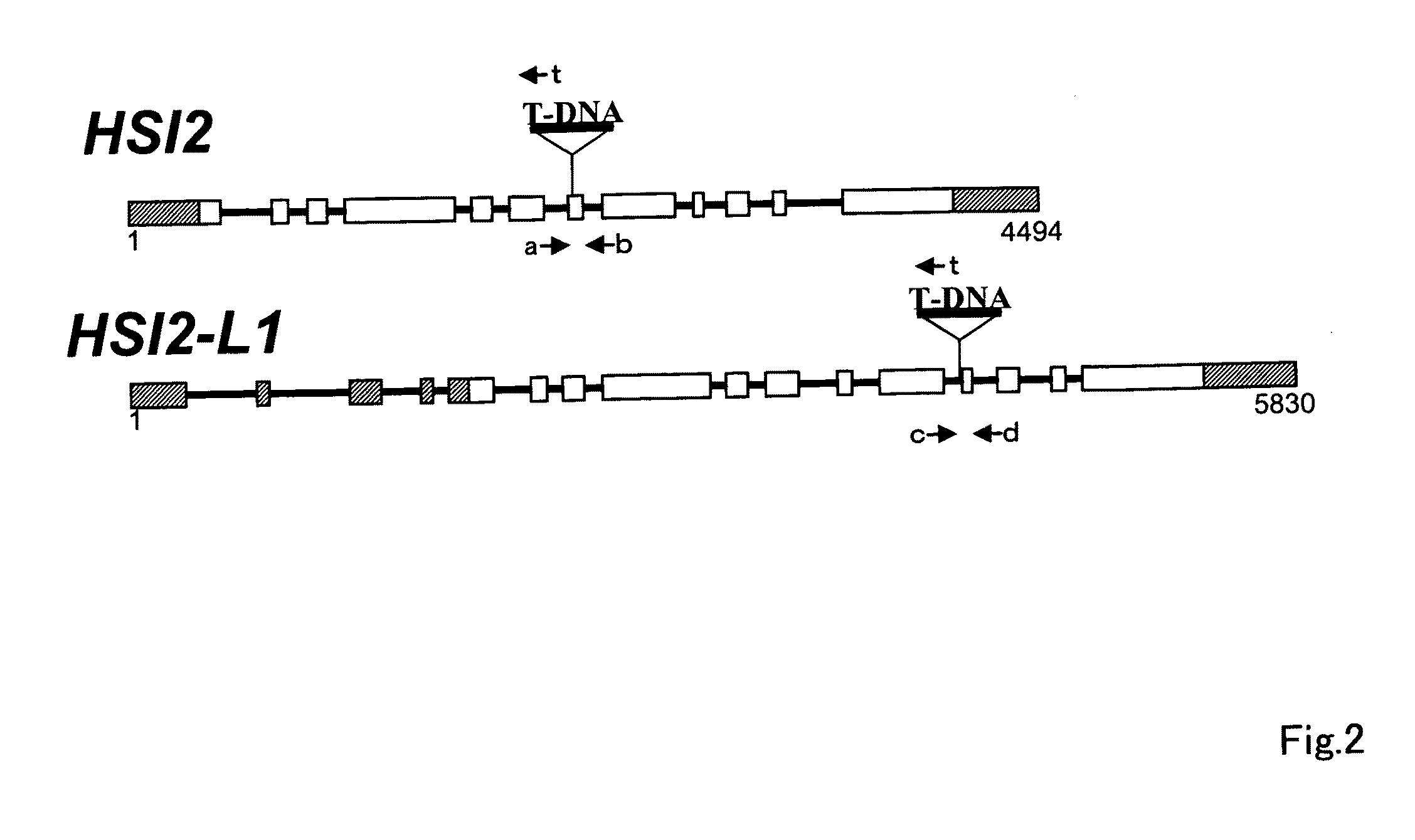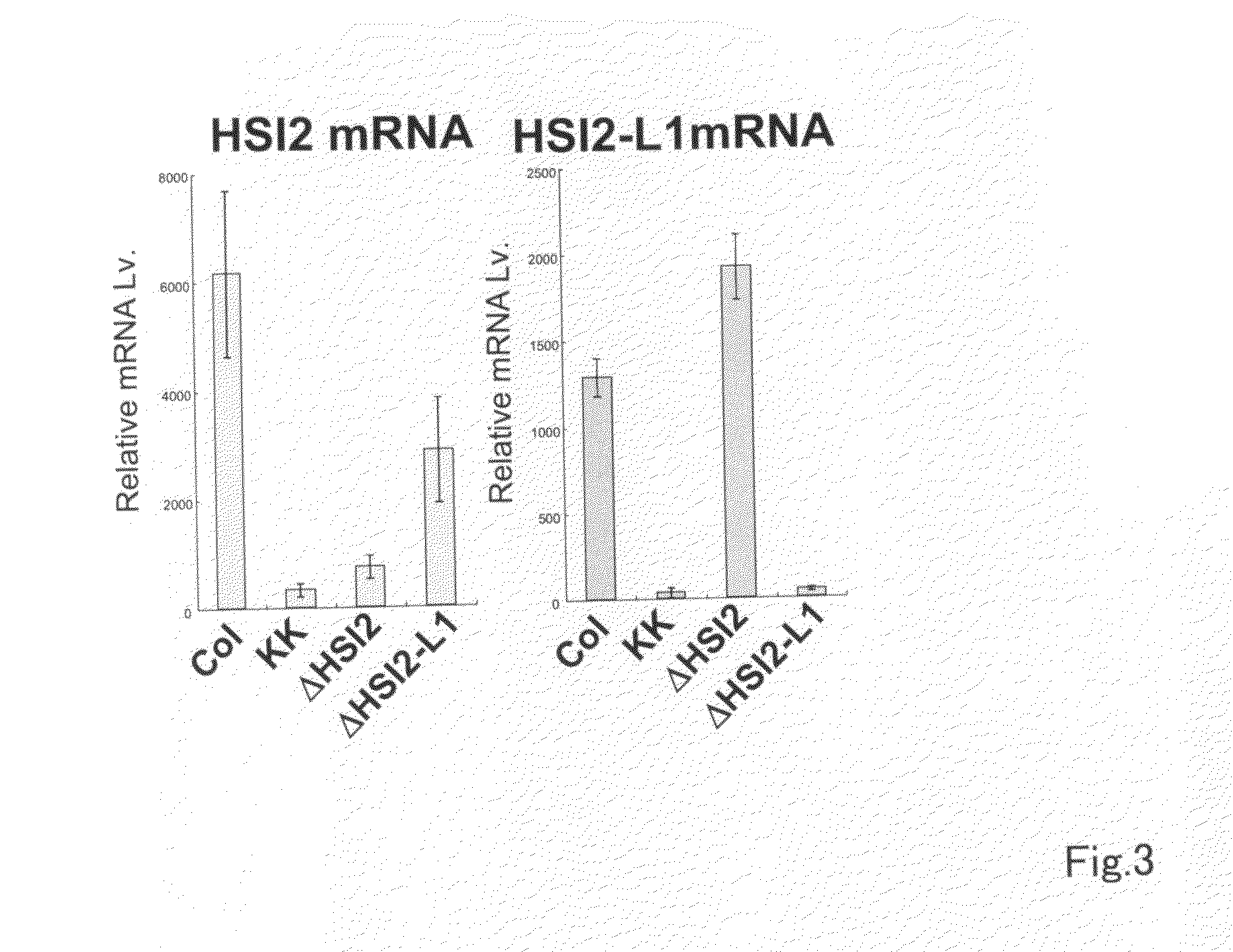Plant body with modified program related to accumulation of storage material and the use thereof
- Summary
- Abstract
- Description
- Claims
- Application Information
AI Technical Summary
Benefits of technology
Problems solved by technology
Method used
Image
Examples
example 1
Isolation of Double Knockout Mutant Strains of HSI2 and HSI2-L1 (HSL1)
[0105]A T-DNA homoinsertion line was selected by genomic PCR from a mutant line (SALK—059568) obtained by inserting T-DNA at the No. 12 exon of the HSI2-L1 (HSL1) gene. Compared with the wild type, the homoinsertion line had a markedly lower amount of HSI2-L1 (HSL1) mRNA. Based on this result, the T-DNA insertion mutant line was called ΔHSI2-L1 (hsl1-1). ΔHSI2-L1 (hsl1-1) plant bodies had no conspicuous anomalies and exhibited growth similar to that of the wild-type strain.
[0106]Next, F1 seeds obtained by crossing a AHSI2 (hsi2-2) homo line plant with a ΔSI2-L1 (hsl1-1) homo line plant were allowed to self-pollinate, giving F2 plants, from which F3 plants were subsequently obtained. Of the 144 F3 plants obtained, eight individuals were abnormal seedlings which stopped growing in 9 days. This implied that double mutants for ΔHSI2 (hsi2-2) and ΔHSI2-L1 (hsl1-1) are abnormal seedlings. Hence, Δhsi2− / − / Δhsi2-11+ / − and...
example 2
Detailed Analysis of the Phenotypes of Double Mutant Strains
[0108]To observe the growth of double mutant strain seedlings, Δhsi2− / − / Δhsi2-11+ / − and Δhsi2+ / − / Δhsi2-11− / − progeny plant seeds were germinated in a 1% sucrose-containing agar medium. In wild-type A. thaliana, root hairs developed on day 3 after imbibition treatment (FIG. 4, top row in right-hand column), a green cotyledon opened up on day 5 (FIG. 4, second row in right-hand column), and the roots elongated a considerable degree on day 7 (FIG. 4, third row in right-hand column). Also, surface unevenness was not observed in the wild-type hypocotyls (FIG. 4, bottom row in right-hand column). By contrast, in the KK strain, because a distinctive retardation of the development of the root hairs and the opening of the cotyledon were observed (FIG. 4, top row and second row in left-hand column), these seedlings were distinguishable from seedlings of other genotypes on days 3 to 5 after imbibition treatment. Also, in the KK strain...
example 3
Microarray Analysis
[0111]A microarray analysis on the wild-type strain and the KK strain was carried out in order to investigate genes in which the expression level is affected by a double deficiency for ΔHSI2 (hsi2-2) and ΔHSI2-L1 (hsl1-1). The total RNA was extracted from KK mutant seedlings (on day 4 after imbibition treatment) in which hypocotyl thickening did not arise. The same procedure was followed as described above in “6. Microarray Analysis” under “Materials and Methods.” In two arrays (Agilent Arabidopsis3 oligo Microarray) in which a probe for the 37685 gene of A. thaliana had been fixed, 856 genes were present for which the level of expression in the KK strain was at least twice that in the wild type strain, and 40 genes were present for which the level of expression was at least 30 times higher than in the wild type. Genes for which the level of expression in the KK strain decreased were also present. FIG. 5 shows the group of genes for which the level of expression i...
PUM
| Property | Measurement | Unit |
|---|---|---|
| Gene expression profile | aaaaa | aaaaa |
| Level | aaaaa | aaaaa |
Abstract
Description
Claims
Application Information
 Login to View More
Login to View More - R&D
- Intellectual Property
- Life Sciences
- Materials
- Tech Scout
- Unparalleled Data Quality
- Higher Quality Content
- 60% Fewer Hallucinations
Browse by: Latest US Patents, China's latest patents, Technical Efficacy Thesaurus, Application Domain, Technology Topic, Popular Technical Reports.
© 2025 PatSnap. All rights reserved.Legal|Privacy policy|Modern Slavery Act Transparency Statement|Sitemap|About US| Contact US: help@patsnap.com



